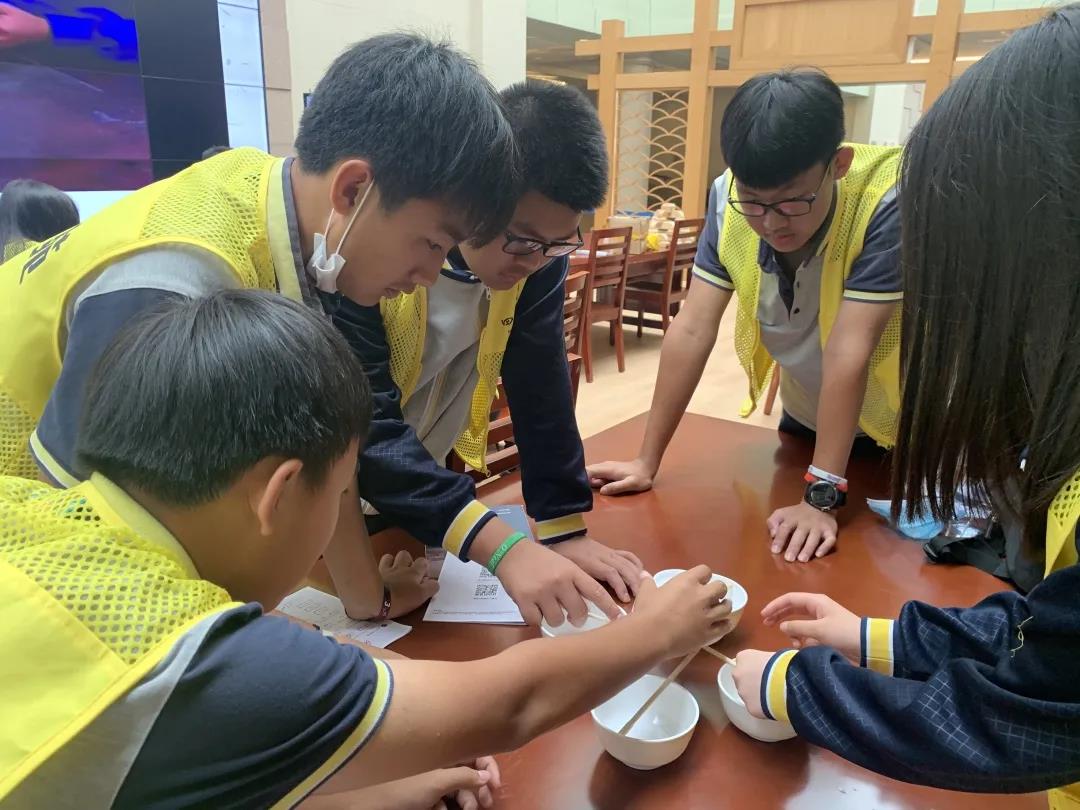CCIS研学活动丨汉代建筑之美 The Beauty of The Structures in Han Dynasty
四川博物馆研学活动
Sichuan Museum Study Tour
5月26日上午,成都协同学校八年级的同学们搭乘地铁来到四川博物院,参加汉代建筑之美博物馆课程。
On 26th May,G8 students in CCIS went to Sichuan Museum to study the beauty of the structures in Han Dynasty.

开启快乐模式
经过了一个多小时的“长途跋涉”,我们抵达了博物院。一进门,我们就被自动贩卖机给吸引了。但是因为口袋空空,我们也只能“乘兴而来,败兴而归”。
After one hour of travel, we arrived at Sichuan Museum. We were attracted by the vending machine at the gate, but after we checked our pockets, we gave up.
开始上课,老师给我们发放了研学手册,上面有许多问题,需要我们通过今天的学习来探究。首先我们通过视频了解了汉代建筑的杰出代表——未央宫。她的占地面积是故宫的六倍之多。但是遗憾的是我们今天已经看不见这座雄伟的宫殿了,只留下了一个前殿的台基遗址。虽然我们今天已经不能看到汉代地上建筑的实物,但是我们可以通过一些文物去认识汉代的建筑。接下来,我们就来到展厅,参观汉代墓葬中出土的画像砖和陪葬品,画像砖上有建筑的图样,陪葬品中有各种建筑的模型,连装饰都表现得十分精细。

Class began. The teacher handed out worksheets for us to finish for the day. First, we learned about Weiyang Palace through video, an outstanding representative of Han Dynasty architecture. It was 6 times bigger than Forbidden Palace. It is a pity that we can not see this magnificent palace today, only a platform of front hall the remains. Although we can no longer see the real buildings of the Han Dynasty, we can learn them through some cultural relics. Then we came to the exhibition hall to visit the Han Dynasty tomb excavated brick and burial goods. There are architectural patterns on these bricks and the burial goods have a variety of building model with fine details.

了解了汉代的建筑,回到教室,我们开始学习中国古建筑的重要结构以及其中的力学原理。中国古建筑中最重要的木架构由柱、梁、枋、椽、檩组成,这些结构由同样是木质的斗拱连接,支撑起屋顶。我们还做了一个木架构承重的小实验。用四个碗代表四根柱子,用四根筷子表示梁和枋,将四根筷子的一头搭在碗上,另一头交互搭在一起,这样一个由四根筷子撑起的结构,居然还可以承受一个碗的重量。而碗的下面,除了四个筷子组成的结构,就是悬空的。
After the exhibition visitwe went back to a classroom to learn the important structure of Chinese ancient architecture and its mechanics principle. The most important wooden structure in Chinese ancient building that supports the roof is composed of column, beam, tiefang, rafter and purlin, which were connected by wooden Dou Gong. We also did a small experiment of wooden structures. Four bowls represented four pillars, and four chopsticks represented beams and tiebeams. Put one end of each chopstick on the bowl, and put the other end interactively together. Such a structure supported by four chopsticks can actually bear the weight of another bowl.


我们还学习了中国木作的精髓——榫卯结构。这种结构不使用钉子和胶水,仍能让木质零件严丝合缝组成一件件家具,一件件房屋的木架构。不仅如此,这种结构还具有极大的抗震性。我们看了一个视频,视频中人们给一个仿古木结构屋子做抗震实验,当震级达到10级时,房屋的木结构虽然晃动很厉害,但仍然屹立。而墙壁在震级达到7级时就垮塌了。这就是中国建筑“墙倒屋不塌”的神话。
We also learned the essence of Chinese wood work –Sun Mao construction. This structure needn’t use nails or glue, but still stitched wooden parts together to form the wooden furniture and house. Further more, the structure is also shock-resistant. We watched a video of people doing an earthquake test on an ancient wooden house. When the earthquake reached magnitude 10, the wooden structure of the house shook a lot, but it still stood up. Walls collapsed when the quake reached magnitude 7. This is the Chinese architectural myth that "Even if the wall falls, the house will still stand".

之后我们又学习中国古建筑最具观赏性的部分——屋顶,了解了屋顶的样式和等级。最后,我们每一个人都动手搭建了一个房屋模型。看似简单,但也花费了我们一个多小时的时间。
After that, we studied the roof, the most ornamental part of ancient Chinese architecture, and learned about the style and grade of the roof. In the end, each of us built a model house. The seemingly simple structure took us more than an hour to finish.
欢迎扫码咨询
